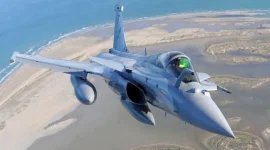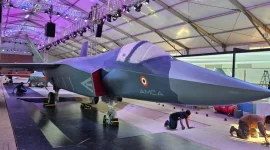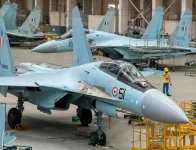- Views: 1K
- Replies: 15
A significant operational challenge concerning the Indian Army's powerful Russian-origin Smerch rocket systems has recently come to light. Lt Gen PR Shankar (Retd), former Director General of Artillery, revealed in an interview with The Print that the Smerch Multiple Launch Rocket Systems (MLRS), acquired in 2005 and officially inducted by 2008, could not be fired until 2012 due to persistent technical problems.
This four-year gap between induction and operational readiness has sparked discussions among defence observers regarding India's procurement procedures and the handling of post-delivery issues.
The Smerch, a 300mm MLRS with a reported range extending up to 90 kilometres, was procured from Russia to significantly enhance the Indian Army's long-range strike capabilities.
Considered one of the most potent systems of its kind globally, the Smerch was intended to provide a substantial advantage in delivering precision fire and saturating large areas occupied by enemy forces.
The acquisition, valued at over $500 million according to reports, was part of India's efforts to modernise its artillery and counter perceived threats along its borders. Deliveries of the launchers, rockets, and associated equipment commenced around 2007-2008.
The central question arising from Lt Gen Shankar's disclosure is why a critical weapon system remained non-operational for four years after its formal introduction into service. The retired general cited unspecified "technical issues" as the primary cause.
While specific details were not provided in the interview, defence analysts suggest that problems with the system's navigation capabilities were a major factor. It has been alleged that the Russian suppliers were reluctant or slow to address these defects, adopting a tough negotiating stance, which complicated resolution efforts for the Indian Army.
The procurement process for the Smerch system began in 2005, aiming to bolster India's artillery alongside indigenous systems like the Pinaka MLRS. The Smerch systems were formally inducted in 2008, and dedicated regiments were raised to operate them. However, the subsequent inability to make the system operational until 2012 highlights a critical failure in achieving combat readiness, potentially impacting India's defence preparedness during that period.
India's decision to acquire the Smerch reflects its historical reliance on foreign suppliers, particularly Russia, for advanced military technology. The system was chosen based on its proven capabilities and long-range destructive power.
The reasons for the prolonged technical difficulties remain unclear, potentially involving quality control issues during manufacturing, inadequate pre-delivery testing, or incompatibility with Indian operational requirements.
Bureaucratic delays, challenges in securing spare parts, or protracted negotiations with the Russian state agency Rosoboronexport over resolving the identified defects could also have contributed to the four-year operational gap.
Lt Gen Shankar's comments underscore broader concerns about India's defence import dependencies. Issues with foreign-procured equipment, where vendors may hold significant leverage after the sale, are not unique to the Smerch case.
This situation highlights the importance of robust quality checks, clear contractual obligations for post-sales support, and the ongoing push for greater self-reliance (Atmanirbhar Bharat) in defence manufacturing to avoid such vulnerabilities.
While the specific technical fixes implemented around 2012 remain undisclosed in official accounts, the Smerch systems were eventually made operational. However, the significant delay meant the Indian Army could not fully utilise this key asset for a considerable period, raising important questions about the effectiveness of procurement processes and the need to ensure that acquired defence equipment is readily deployable.



